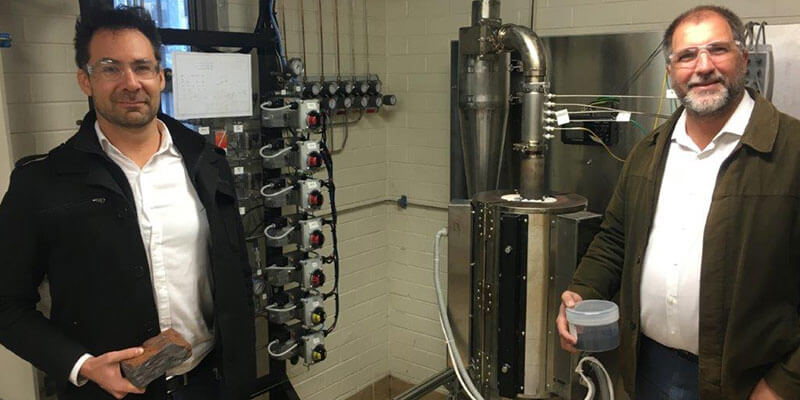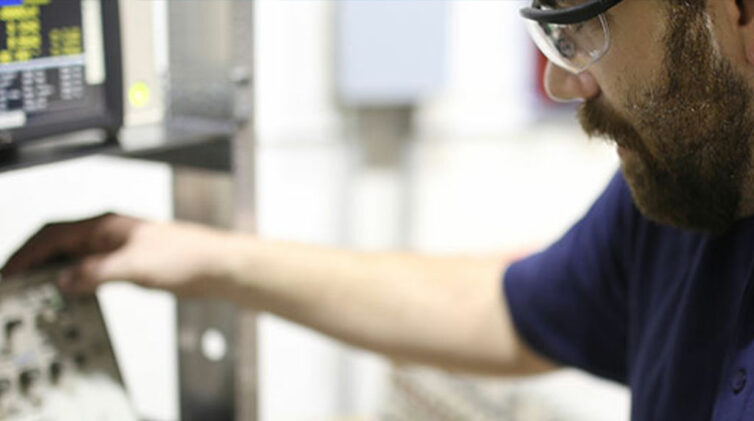Low cost hydrogen in plentiful supply is essential for fuel cell cars (FCEVs) to be commercially viable. FCEVs are already finding their way onto Australian roads in limited numbers.
The developers envisage their technology one day delivering hydrogen on demand at filling stations from production units about the size of a shipping container.
The development has been made by Western Australian-based Hazer Group, already a public-listed company, which may be poised for major global recognition as it sets a fast pace that would boost the development of hydrogen-fuelled, zero emission FCEVs.
The crux of Hazer’s development is that it captures both the potentially high-growth markets for both fuel cells and for batteries.
The other key output from the process, graphite, is the core ingredient of batteries. Lithium batteries for EVs require especially large quantities of graphite per car.
What started as a University of Western Australia project in 2007, Hazer Group has found a solution to the cheap and relatively simple manufacture of hydrogen (for industrial and vehicle-fuel use) and pure, commercial grade graphite for use in batteries.
One of the founders and now the managing director of Hazer Group, Geoff Pocock, said it is a thermo-catalytic process – sometimes called methane cracking – which involves using two elements common in many countries, and especially rich in Western Australia. They are natural gas – which contains methane – and iron ore.
The decomposition of methane produces hydrogen and, in its solid graphite form, carbon.
“In the past, the catalyst used in this process was too expensive to make the operation economically viable,” Mr Pocock said.

Geoff Pocock, managing director of Hazer Group
“So, in 2007 when we started the research, we looked at using inexpensive iron ore. It is cheap and plentiful and, along with natural gas, are the resource bedrocks of Western Australia.”
The hydrogen is used primarily for industrial purposes, mainly to make chemicals and fertilisers, but will come into increasing demand for use in fuel cell transport vehicles.
Mr Pocock said that it is a huge market worth $100 billion a year – and that number does not include, at this stage, fuel-cell electric cars.
The graphite produced by the process is also valuable – a market worth an estimated $13 billion a year.
Mr Pocock said a lithium-ion battery requires up to 20 times more graphite in its construction than lithium.
“The batteries in an electric vehicle, such as a Tesla, would require 34kg to 100kg of graphite,” he said. “Every fuel-cell and electric vehicle requires batteries that contain graphite.”
Mr Pocock said that although the primary consideration for marketing hydrogen was for industrial uses, “the vehicle industry is very interesting to us”.
“Fuel-cell vehicles are gathering a lot of attention and have the potential to dramatically increase demand for hydrogen,” he said.
“On top of that, the industrial demand for hydrogen is enormous, about 65 million tonnes a year worth around $100 billion.”
Currently the production of hydrogen is done by using fossil fuel as the feedstock and this feedstock has a CO2 footprint.
“As a rule, for every tonne of hydrogen produced, the manufacturer produces 7-11 tonnes of CO2,” Mr Pocock said.
“The only way now to make hydrogen by using a sustainable source is by electrolysis of water. The problem is the enormous amount and cost of energy used in the process.
“More energy is required to make the hydrogen that is released in the use of hydrogen.
“So the problem was the production of hydrogen without producing CO2. Methane is a natural feedstock because it can quite easily release hydrogen and carbon molecules.”
Mr Pocock said he didn’t know how much a plant to produce the hydrogen will cost.
Hazer Group has recently moved the development from the University of WA to the University of Sydney and is now working on scaling up the project for a commercial plant.
“We’re now making up to a kilogram of hydrogen and graphite a day,” he said.
“Next year a pilot plant should be able to make hundreds of kilograms a day, so we’re talking 10-50 tonnes a year.
“After we reach that stage, we will design a full-scale hydrogen production plant capable of making up to 50,000 tonnes a year.”
Mr Pocock believes the hydrogen would be better produced from a central plant.

Hazer Group chief technical officer Andrew Cornejo (left) and Geoff Pocock
However, he is very aware of the expensive cost of distribution of the gas.
“For example, we could make hydrogen for $1 to $1.50 a kilogram,” he said.
“But at the point of sale, it could be as high as $5 to $6 a kilogram because of the cost of freight and distribution.
“Hydrogen is very difficult and expensive to distribute by pipes and it’s also difficult to distribute in trucks.”
He said that this problem with distribution could make it plausible and cost-effective for small plants that could be established in high-density fuel-cell vehicle areas.
“It wouldn’t be to the scale of the current fuel stations in a city, but it would be sufficient coverage to meet demand,” he said.
“It is likely that a plant at a city location, for example, would be the size of a shipping container.”
“It could make 100 kilograms a day, which should be enough for refueling purposes.
“That size plant is in development.”
Mr Pocock dismissed the concept of having a small hydrogen-production plant in a vehicle.
“It’s not likely,” he said.
“It makes the vehicle too complex. It’s much simpler and more efficient to have strategically-located plants.
“Current fuel-cell vehicles have special fuel tanks that are pressurized at 700 atmospheres (about 10,300psi) and are very heavy.
“The gas is light but the tanks are heavy. We don’t plan to solve that problem – we’re here to make hydrogen as efficiently as possible.”
“At the moment we are concentrating on refining the process,” Mr Pocock said.
“We see ourselves as developing the concept and gaining license fees from that. But things could change – it could be that we would expand into making plants and distributing them.”
Car makers have been quick to discuss Hazer’s process.
“We have had conversations with car makers and other representatives of the automotive industry, but everything is confidential,” he said.
“It has come from the regions that have fuel-cell cars either on sale or on trial. These include Japan, the US and Europe.
“They have shown interest in the process of producing hydrogen from ‘clean’ sources.
“Carmakers are facing a series of roadblocks in rolling out hydrogen-fuelled vehicles and there are other issues aside from sourcing hydrogen.
“We’re only solving one.”
Hazer Group has patented its process and Mr Pocock said it was now able to consider the best way to commercialise its intellectual property.
“We can license the process to others if we want to, or we could be the ones to build plants and sell the hydrogen or sell the plants,” he said.
“We have made no firm decisions. We have to be flexible. There are a number of business models and directions we can go.
“It is reassuring for us that everyone is positive about what we are doing and how it will work. In particular, there is a lot of interest in the zero CO2 output of the process and the ability to use small plants to manufacture the hydrogen where it is needed.
“We’re in the right place with the hydrogen. And then we have the graphite market to look at…”

HOW IT WORKS
Currently the principal method of manufacturing hydrogen on an industrial scale is using natural gas through a process known as steam-methane reformation (SMR). SMR emits significant CO2 as a by-product of the hydrogen production process. The chemistry of the Hazer process, by which hydrogen is formed by the decomposition of methane into hydrogen and carbon (instead of CO2) has been known for over 50 years, but has not been used as a commercial hydrogen production process for cost reasons. Hazer Group’s innovation is using a very cheap catalyst in the form of unprocessed iron ore, replacing previous catalysts such as nickel that were expensive and made the process less economically viable.
The process uses natural gas that is passed through the heated iron-ore catalyst to break down the methane in the gas into its elements of hydrogen and carbon.
Hazer can use some of the hydrogen to power the system and the remainder is the hydrogen destined for sale.
THE MARKET
Hydrogen: Industrial uses include the manufacture of ammonia for agricultural fertilizer, and cyclohexane and methanol which are used in the production of plastics and pharmaceuticals. It is also used to remove sulphur from fuels during the oil-refining process. Large quantities of hydrogen are used to hydrogenate oils to form fats, for example to make margarine. In the glass industry hydrogen is used as a protective atmosphere for making flat glass sheets. In the electronics industry it is used as a flushing gas during the manufacture of silicon chips.
Graphite: It is used in the production of lead-acid and lithium-ion batteries, in the foundry crucibles used in the steel industry (its biggest market), for vehicle brake linings, lubricants and a variety of other industrial uses. It can average about $1300 a tonne. Globally the graphite market is worth about $13 billion a year.













 Read More: Related articles
Read More: Related articles

